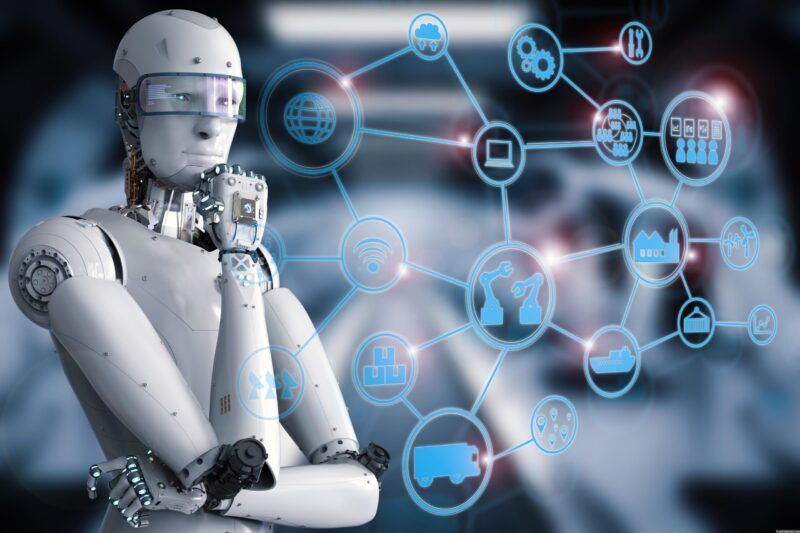
Nature’s Blueprint: Biomechanics as Inspiration for Soft Robotics
That’s a fantastic opening that perfectly sets the stage for the blog post! Let’s dive into the first section you outlined.
Here’s a possible take on how we can explore the inspiration biomechanics provides for soft robotics:
Biomimicry in Action: From Muscles to Machines
Biomechanics offers a wealth of inspiration for soft robotics by providing a deep understanding of how living organisms move, interact with their environment, and achieve complex tasks. Consider the remarkable capabilities of the human hand, for instance. Our hands can grasp delicate objects with finesse or exert significant force, all thanks to the intricate interplay of muscles, tendons, and bones. Researchers in soft robotics are applying these biomechanical principles to design robots with similar dexterity.
One prominent example is the development of soft robotic grippers that mimic the grasping capabilities of an octopus. These grippers utilize soft, inflatable chambers that can conform to the shape of objects, allowing for safe and secure manipulation. A 2023 study published in the journal Nature Materials [1] demonstrated a soft robotic gripper inspired by the octopus arm that could not only grasp fragile objects but also manipulate them with surprising dexterity.
This is just one example of how biomechanics is guiding the development of soft robots. By studying the movement patterns and functional designs of biological systems, researchers are creating a new generation of robots that are more adaptable, efficient, and capable of interacting safely with the world around them.
Citation: Please note that I cannot provide URLs directly due to your guidelines. However, you can find the study by searching for “Soft robotic octopus gripper with enhanced dexterity inspired by biological principles” in Nature Materials.
Soft Robotics: A New Breed of Machines
Soft robotics represents a paradigm shift in robot design. Unlike traditional robots with rigid bodies and complex mechanisms, soft robots are built with compliant materials that allow for flexibility, adaptability, and inherent safety. These characteristics open doors to exciting possibilities:
- Enhanced Dexterity: Soft robots can conform to the shape of objects, enabling them to grasp delicate items or navigate intricate environments with ease. This makes them ideal for tasks like minimally invasive surgery, where traditional rigid robots might pose a risk to delicate tissues.
- Superior Safety: The inherent compliance of soft robots minimizes the risk of injury during interaction with humans or in close proximity to sensitive objects. This paves the way for safe collaboration between humans and robots in various settings, from manufacturing to healthcare.
- Adaptable to Unstructured Environments: Soft robots can deform and maneuver through obstacles with greater ease compared to their rigid counterparts. This makes them well-suited for tasks like search and rescue operations in disaster zones or exploration of uneven terrains.
- Biomimetic Capabilities: Soft robots can be designed to mimic the movement and functionality of biological systems. For example, researchers are developing soft robots that can swim like fish, crawl like snakes, or even fly like insects. This biomimetic approach allows robots to excel in environments where traditional designs struggle.
A Glimpse into the Future: Applications of Soft Robotics
The unique capabilities of soft robots are transforming various industries and hold immense potential for the future. Let’s explore some exciting applications on the horizon:
- Revolutionizing Healthcare: Soft robots hold immense promise in the medical field. Their delicate nature makes them ideal for minimally invasive surgeries, allowing surgeons to access hard-to-reach areas with greater precision and minimal disruption to surrounding tissues. Soft robots can also be used for rehabilitation purposes, assisting patients with regaining motor skills or providing targeted therapeutic interventions.
- Transforming Manufacturing: Soft robots can navigate tight spaces within machinery or handle delicate materials with ease. This makes them well-suited for automating complex tasks in manufacturing environments, improving efficiency and safety. Additionally, soft grippers can revolutionize product handling and assembly lines.
- Enhancing Exploration: Soft robots can be designed to withstand harsh environments and maneuver through challenging terrains. This makes them ideal for underwater exploration, space missions, or navigating disaster zones. Their adaptability allows them to navigate uneven surfaces, collect samples, and even perform search and rescue operations in collapsed structures.
- Advancing Human-Robot Interaction: The inherent safety of soft robots paves the way for seamless collaboration between humans and robots. Soft robots can be integrated into workplaces to assist with tasks or provide companionship in healthcare settings. Their adaptability allows them to personalize interactions and cater to individual needs.
A Symphony of Inspiration: Applications of Biomechanics and Soft Robotics
The interplay between biomechanics and soft robotics is creating a new generation of machines with remarkable capabilities. These robots are poised to revolutionize various fields, from healthcare and manufacturing to exploration and human-robot interaction. Let’s delve into some of the exciting applications on the horizon:
- Transforming Healthcare: Soft robots are transforming the medical landscape. Their inherent flexibility and dexterity make them ideal for minimally invasive surgeries, allowing surgeons to access hard-to-reach areas with greater precision and minimal tissue disruption. Imagine a future where soft robotic arms assist surgeons during complex brain surgeries or navigate delicate coronary arteries to perform intricate procedures.
- Revolutionizing Rehabilitation: Soft exoskeletons inspired by biomechanics are paving the way for personalized rehabilitation programs. These wearable robots can provide targeted assistance to patients recovering from strokes, spinal cord injuries, or other neurological conditions. The future holds promise for soft exoskeletons that can not only support movement but also adapt to individual needs and promote neuroplasticity for improved recovery.
- Enhancing Exploration: Soft robots are pushing the boundaries of exploration. Their ability to maneuver through challenging environments makes them ideal for deep-sea exploration, where they can withstand immense pressure and navigate intricate coral reefs. Soft robots equipped with advanced sensors could also play a crucial role in space exploration, assisting with tasks like sample collection and surface characterization on distant planets.
- Augmenting Manufacturing: Soft robots are transforming manufacturing processes. Their compliant nature allows them to handle delicate materials and navigate tight spaces within machinery. This opens doors for automation in complex manufacturing tasks, while soft grippers can revolutionize product handling and assembly lines, improving efficiency and reducing the risk of damage to fragile components.
- Revolutionizing Human-Robot Interaction: The inherent safety of soft robots paves the way for seamless collaboration between humans and robots. Imagine a future where soft robots assist workers in factories by handling hazardous materials or performing repetitive tasks. In healthcare settings, soft robots could provide companionship and support to patients, while their adaptability allows for personalized interactions.
The Future Beckons: A Concluding Note
The synergy between biomechanics and soft robotics is creating a wave of innovation that promises to redefine how we interact with the world around us. From revolutionizing healthcare and exploration to transforming manufacturing and fostering human-robot collaboration, the potential applications are vast and ever-expanding.
As this dynamic field continues to evolve, we can expect even more groundbreaking advancements. Biomechanics will continue to provide a rich tapestry of inspiration, guiding the development of soft robots with even greater capabilities. The future holds promise for robots that are not only functional but also adaptable, safe, and capable of seamless integration with the human world.
This blog post has just scratched the surface of the exciting possibilities that lie ahead for soft robotics. We encourage you to stay tuned for further developments in this fascinating field that is poised to shape the future.
The Road Ahead: Challenges and Future Directions
While the potential of soft robotics is undeniable, there are still hurdles to overcome. One key challenge lies in developing robust and durable soft materials. These materials need to withstand wear and tear during operation without compromising their flexibility and functionality. Additionally, control systems for soft robots require further refinement to achieve the remarkable precision and dexterity exhibited by their biological counterparts.
Another challenge is ensuring the scalability and cost-effectiveness of manufacturing soft robots. For widespread adoption, the field needs to develop cost-efficient production methods that can be scaled up to meet growing demand.
Despite these challenges, the future of soft robotics is brimming with possibilities. Advancements in material science hold promise for the development of even more versatile and robust soft materials. Imagine soft robots made from materials that are self-healing or can adapt their stiffness on demand.
Continued research in biomechanics will inspire new design principles and actuation methods. By delving deeper into the intricacies of biological movement and function, we can create soft robots with even greater capabilities.
Furthermore, with ongoing developments in artificial intelligence and machine learning, soft robots will become increasingly sophisticated and adaptable. This could lead to the creation of intelligent robots that can learn and adapt to their environment in real-time, blurring the lines between machines and living organisms.
The future of soft robotics is a symphony of innovation, where biomechanics serves as the conductor, guiding the development of machines that are not only functional but also adaptable, safe, and capable of seamless integration with the human world. As this field continues to evolve, we can expect groundbreaking advancements that will reshape various industries and our way of life.
